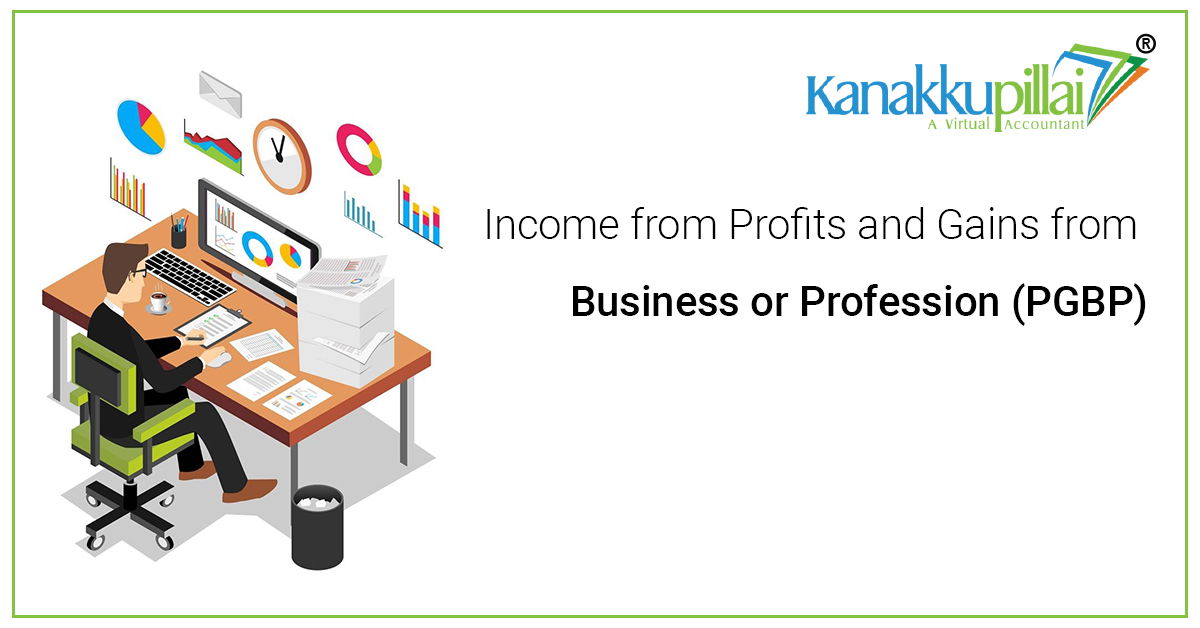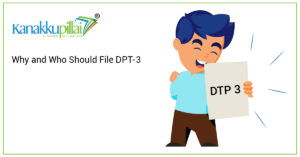![]()
Profits and Gains from Business or Profession (PGBP)
In the realm of business and professions, the generation of income from profits and gains is crucial for financial success and stability. Income from Profits and Gains from Business or Profession (PGBP) is integral to the tax framework. It plays a significant role in determining the taxable income of individuals and entities.
Income from PGBP refers to the earnings generated by individuals or entities engaged in business or professional activities. It encompasses the profits and gains derived from the trade or profession, including income from the sale of goods, provision of services, rent, interest, capital gains, royalties, and dividends. Proper identification and computation of income from PGBP are crucial for determining taxable income and fulfilling tax obligations.
Profit and gains of Business or profession (also known as PGBP) is the third head in the computation of income apart from four incomes: income from salary, income from house property, income from capital gains and income from other sources. This is one of the Major heads compassing for computing professional tax registration.
Profit is the summation of total income less total expenses. Gain is the proceeds received from the sale of fixed or financial assets. It is generated outside of business operations. Take the selling price and subtract the initial purchase price. The result is the gain or loss. Take the gain or loss from the investment and divide it by the investment’s original amount or purchase price. Finally, multiply the result by 100 to arrive at the percentage change in the investment.
Income earned through your profession or business is charged under the head’s profits and gains of business or profession. ‘ The income chargeable to tax is the difference between the credits received on running the business and expenses incurred.
Business: Business means purchasing and selling or manufacturing a commodity to make a profit. It includes any trade, commerce or manufacture or any adventure or concern like trade, commerce and manufacture.
Business Income is the profit that is earned from the business. It is nothing but Total Revenue/Total Turnover minus Total Expense. The profit from the business is the taxable income/business income.
There are two types of businesses,
- Speculative Business Income: When the net income from the business is not fixed and changes from time to time come under this category.For Example: Share Trading Business
- Non-Speculative Business Income: When the net income from the business is fixed and does not changes from time to time, it comes under this category.For Example, any manufacturing/trading or any business Note: It includes Income from trading Futures and Options.
Profession: Profession means the activities for earning livelihood which require intellectual skill or manual skill, e.g. the work of a lawyer, doctor, auditor, engineer and so on are like the profession. The profession includes vocation. Vocation: Vocation implies the natural ability of a person to do some particular work, e.g. singing, dancing, etc.
Profits: Excess income over expenditure.
Gains: Any incidental revenue from the business. As the rules for assessing business, profession or vocation are the same, there is no importance in making any distinction between them for income tax purposes.
Sec. 28: Basis of Charge
The following incomes are chargeable under this head and will be computed under the provisions laid in sections 29 to 44DB.
- Profits or gains of any business or profession at any time during the previous year
- Any compensation or other payments due to or received by any by whatever name, manage the whole or significant whole of the affairs of an Indian company, at or connected to the termination of his management or the modification of the terms and conditions
- Income derived by a trade, professional or similar association from specific services performed for its members
- The value of any benefit or perquisite, whether convertible into money or not, arising from business or the exercise of a profession
- Any interest, Commission, salary, remuneration, or bonus due to, or received by, a partner of a firm from a firm
- Any profit on the transfer of the Duty Entitlement Pass Book Scheme.
- Any profit on the transfer of the Duty-Free Replenishment Certificate.
- Export incentives for exporters
- Any sum received under Keyman Insurance Policy, including the Bonus
- Any sum received for not carrying out any activity in relation to any business or profession or not sharing any know-how, patent, copyright, trademark etc.
- Any sum received or receivable, in cash or kind, on account of any capital asset (other than land or goodwill or financial instrument) being demolished, destroyed, discarded or transferred if the whole of expenditure on such capital asset has been allowed as a deduction under section 35AD.
- Income from Speculative Transaction
Non-Taxable Business Income
The following income is not taxable under this head profits and gains of business or profession.
1) Rent of House Property
Where an assessee is carrying on a business of owning and letting out of residential houses, his income from such letting shall be taxable under the head ‘Income from house property’ and not as business income, however, if residential houses/flats are let out to the employees for the efficient conduct of the assessee’s own business and letting of house properties is not the main business of the assessee but is subservient and incidental to the main business, income from such letting shall be taxable as business income.
2) Dividend Income
An assessee carrying on a business of dealing in shares and securities and earning income by way of dividends on such business assets shall be taxable, in respect of the dividends, under the head ‘Income from other sources and not under this head.
3) Winning from Lotteries, Races, etc.
Any winning from Lotteries, Races, etc., is taxable under the head ‘Income from Other Sources’ even if it is derived as a regular business activity. As specified heads of income have been specified for income from these three activities, they have to be taxed under those heads only.
4) Interest received on compensation or enhanced compensation
Interest is taxable under the head ‘ Income from other sources. To summarize the penalty for late filing of Income Tax Return under section 234F of Income Tax Return
General principles for allowing deduction
- Expenditure should have been incurred during the previous year.
- Expenditure should be incurred for the purpose of the business.
- Expenditure done before in respect of setting up of business is not allowed.
- Expenditure on wear and tear of the capital asset used, ie. Depreciation is allowed at the rates prescribed in Income Tax Act
- No expenses in respect of discontinued business are allowed to be deducted.
- Reserves/ provisions for contingencies/ anticipated losses cannot be claimed as a deduction.
- No deduction is allowed for non-taxable businesses like. Agricultural income in India is exempt.
- No deduction is allowed in respect of the depreciation of investment.
Method of Accounting
- Income is to be deducted either based on cash or accrual system of accounting as followed or employed regularly by the assessee and
- Central Government is empowered to notify income computation and disclosure standards. [Section 145 (2)]
Income Tax Compliance
Assessee should file the income from under Profit or gains from business or profession in Form ITR-3 within the due date (generally July 31st in non-audit cases and September 30th in tax audit cases)
Importance of Income from Profits and Gains
Income from PGBP holds significant importance for businesses and professionals. It serves as a measure of financial success, providing insights into the profitability and growth potential of the ventures. The income generated from profits and gains allows entrepreneurs to reinvest in their businesses, expand operations, attract investors, and achieve long-term sustainability. It also contributes to the overall economic development of a nation by driving entrepreneurial activity and creating employment opportunities.
Sources of Income from Profits and Gains
Income from PGBP can arise from various sources within business or profession. These sources include revenue generated from the sale of goods or services, rental income from property, interest earned on investments, capital gains from the sale of assets, dividends received from investments, royalties from intellectual property, and more. Understanding and properly categorizing the sources of income are essential for accurate tax calculations and compliance.
Taxation on Income from Profits and Gains
Taxation plays a significant role in the determination of taxable income from PGBP. Governments impose taxes on the income generated by businesses and professionals to fund public services and infrastructure development. The tax rates and regulations vary depending on the business or profession’s jurisdiction and legal structure. Individuals and entities must understand the applicable tax laws, maintain proper records, and fulfil their tax obligations to avoid penalties and ensure compliance.
Deductions and Allowances for Income from PGBP
To arrive at the taxable income from PGBP, individuals and entities are eligible to claim deductions and allowances for expenses incurred during their business or profession. These deductions and allowances help reduce the taxable income, including rent, employee salaries, utilities, marketing costs, professional fees, depreciation, and other allowable expenditures. It is important to keep accurate records and comply with the regulations governing deductions and allowances.
Accounting and Reporting Requirements for PGBP
Accurate accounting and income reporting from PGBP are vital for financial transparency, compliance with regulatory requirements, and informed decision-making. Businesses and professionals need to maintain proper books of accounts, record transactions, prepare financial statements, and comply with accounting standards and guidelines. Good accounting practices not only facilitate tax compliance but also provide insights into the financial health and performance of the ventures.
Investment Strategies for Maximizing Income from PGBP
Investment strategies play a crucial role in maximizing income from PGBP. Businesses and professionals can generate additional income from their surplus funds by allocating capital into diversified investment portfolios. Prudent investment decisions, based on thorough analysis and market research, can help mitigate risks and contribute to long-term financial success. Investing in stocks, bonds, mutual funds, real estate, or other suitable investment avenues can provide growth opportunities and enhance overall profitability.
Challenges and Risks Associated with PGBP
While pursuing profits and gains offers enticing prospects, businesses and professionals face various challenges and risks in PGBP. Economic uncertainties, changing market conditions, regulatory changes, technological disruptions, competition, and financial constraints are common hurdles impacting profitability. Ventures must adopt risk management strategies, stay updated with industry trends, and remain adaptable to navigate these challenges effectively.
Financial Planning for Income from PGBP
Effective financial planning is vital for optimizing income from PGBP. Entrepreneurs and professionals must develop comprehensive financial plans that include budgeting, forecasting, cash flow management, and investment strategies. By monitoring key financial indicators, implementing cost-saving measures, and aligning financial goals with business objectives, ventures can enhance profitability and ensure long-term sustainability.
Marketing and Growth Strategies for PGBP
Robust marketing and growth strategies are essential for businesses and professionals to maximize their income from PGBP. Effective branding, market research, pricing strategies, advertising, and customer relationship management contribute to increasing market share, attracting clients, and driving revenue growth. Businesses and professionals can gain a competitive edge in today’s dynamic marketplace by leveraging digital platforms, embracing data-driven marketing techniques, and exploring new market opportunities.
Technology and Automation in PGBP
Technological advancements have revolutionized the way businesses and professionals operate, presenting opportunities for increased efficiency and profitability in the realm of PGBP. Embracing automation, artificial intelligence, data analytics, and cloud computing can streamline processes, reduce costs, enhance decision-making, and unlock new revenue streams. Staying updated with technological trends and adopting innovative solutions is crucial for staying competitive in the modern business landscape.
Conclusion
Income from Profits and Gains from Business or Profession (PGBP) forms a significant component of the financial landscape for businesses and professionals. It serves as a measure of success, drives financial sustainability, and contributes to overall economic growth. Understanding the definitions, distinctions, importance, sources, taxation, deductions, accounting requirements, investment strategies, challenges, financial planning, and marketing approaches related to income from PGBP is crucial for entrepreneurs and professionals. By navigating these aspects effectively, ventures can optimize profitability, achieve sustainable growth, and contribute to the prosperity of the economy.
Related Services
FAQs
1) What is Income from Profits and Gains from Business or Profession (PGBP)?
Income from PGBP refers to the earnings generated by individuals or entities engaged in business or professional activities, encompassing profits and gains from trade or profession.
2) Why is income from PGBP important?
Income from PGBP is important as it indicates financial success, allows reinvestment in the business, attracts investors, and contributes to overall economic development.
3) What are the sources of income from PGBP?
Sources of income from PGBP include revenue from sales, rental income, interest, capital gains, dividends, royalties, and other business or professional activities.
4) How is income from PGBP taxed?
Taxation on income from PGBP varies depending on jurisdiction and legal structure, and individuals/entities must comply with applicable tax laws and regulations.
5) What deductions and allowances are available for income from PGBP?
Deductions and allowances for income from PGBP include expenses incurred in the business or profession, such as rent, salaries, utilities, marketing costs, and professional fees.
6) What are the accounting and reporting requirements for PGBP?
Businesses and professionals need to maintain accurate books of accounts, record transactions, prepare financial statements, and comply with accounting standards and guidelines.
7) How can investment strategies maximize income from PGBP?
Based on analysis and research, Prudent investment decisions can generate additional income from surplus funds and contribute to long-term financial success.
8) What challenges and risks are associated with PGBP?
Challenges and risks include economic uncertainties, market changes, regulatory shifts, technological disruptions, competition, and financial constraints.
9) How does financial planning contribute to income from PGBP?
Effective financial planning helps align financial goals with business objectives, monitor key indicators, implement cost-saving measures, and enhance profitability.
10) What role does marketing play in maximizing income from PGBP?
A10: Marketing strategies attract customers, promote products/services, increase market share, and drive revenue growth, maximizing income from PGBP.
11) What is profit and gains of business or profession Sec 28?
Profit and gains of business or profession Sec 28 refer to the income earned by an individual or entity through business or professional activities after deducting allowable expenses. This section outlines the various deductions and allowances that can be claimed against such income and the accounting and reporting requirements for businesses and professionals. Effective financial planning and investment strategies can help maximize PGBP income while addressing associated challenges and risks. Marketing is crucial in driving revenue growth and increasing profitability in this context.
12) What is a business or profession under income tax?
Under income tax, a business or profession refers to any economic activity carried out by an individual or entity to generate income. This can include sole proprietorships, partnerships, companies, and professions such as doctors, lawyers, and architects. The income earned from these activities is subject to taxation under the Income Tax Act and must be reported accurately under the relevant accounting standards and regulatory requirements. Effective financial planning can help optimize tax liabilities while maximizing income from business or professional activities.
13) Which Income is Taxable Under Business and Profession?
Under Business and Profession, any income earned through commercial or professional activities is taxable. This includes income from sales, services, commissions, fees, rent, and royalties. However, certain deductions and allowances can be claimed against such income to arrive at taxable income. It is important to accurately report all sources of income from business or profession and claim all eligible deductions to minimize tax liabilities while maximizing profits and gains. Effective tax planning strategies can help achieve this objective successfully.
14) Which Expenses are Allowed from Income under Business and Profession?
Under Business and Profession, any expense incurred to earn an income is allowed as a deduction from taxable income. This can include expenses such as rent, salaries and wages, office expenses, travelling expenses, legal and professional fees, and depreciation on assets used for business or professional activities. However, it is important to ensure that these expenses are supported by proper documentation and are incurred wholly and exclusively for business or professional purposes. This helps in reducing tax liability while increasing the profitability of the business or profession. Effective expense management strategies can help achieve this objective successfully.
15) What is an example of profit and gain?
An example of profit and gain is when a business owner earns a higher revenue from their sales or services than the expenses incurred to operate the business. For instance, if a restaurant earns $50,000 in revenue in a month and the total expenses including rent, salaries, and supplies, amount to $40,000, then the profit or gain for that month would be $10,000. This profit can be reinvested in the business for growth or can be distributed among the owners as dividends. Proper tax planning can help optimize these profits while minimizing tax liabilities.





